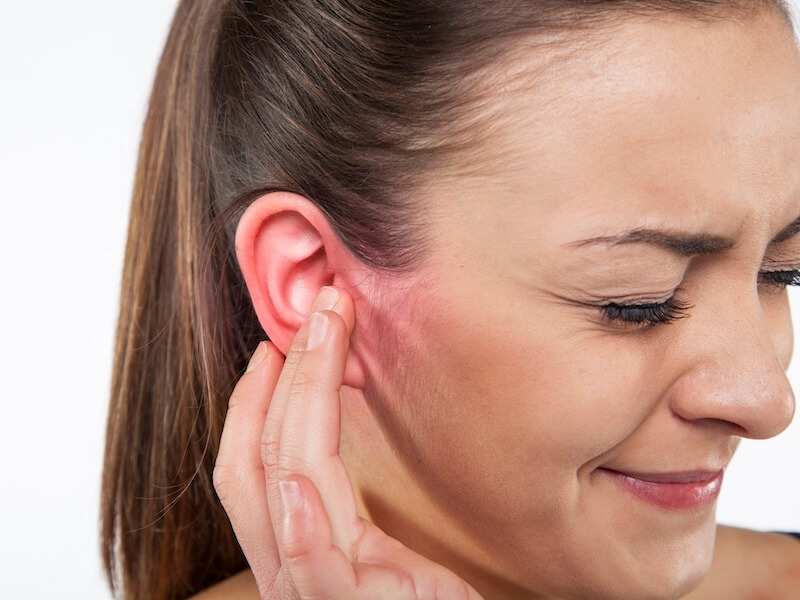
Surprisingly, around 20% of all ear infections happen to adults. The common idea is that ear infections are something that usually affect kids. And it’s accurate that ear infections are more common in kids, but they also happen frequently in adults.
Ear infections can be particularly uncomfortable for people who have hearing loss because they can interfere with their hearing aids. Additionally, when hearing aids aren’t properly maintained, they can become a vehicle for ear infection-causing diseases.
So is it a bad idea to use hearing aids with an ear infection? In general, the answer is yes, but you might not want to. Hearing aids could aggravate the discomfort and swelling caused by an ear infection. However, there are some steps that people who use hearing aids can take to help avoid and treat ear infection symptoms.
Can an ear infection be caused by hearing aids?
You may be questioning if your hearing aid is the cause of your ear infection if you’re an adult with hearing impairment. Technically, the answer is no. But more detail is needed to understand the complete story.
The vast majority of all ear infections are a result of viruses or bacteria that then infect the inner ear. There are a number of paths that bacteria and viruses can take on their way to becoming an infection. Sometimes, a previous illness, such as a cold or sinus infection, will lead to an infection of the inner ear. An infection may be caused by fluid accumulation in other situations. And it’s also certainly possible for viruses and bacteria to infect the inner ear through direct transmission.
For people who wear hearing aids, this can be a regular occurrence. The virus or bacteria hitches a ride on your hearing device and, upon insertion, gets access to the inner ear. Proper hearing aid cleaning and maintenance is crucial for this reason. Essentially, the hearing aid itself does not cause the ear infection, the virus or bacteria does. But your device could play a role in transmission.
Interactions between hearing aids and ear infections
So what is the degree of interaction between hearing aids and ear infections? The best way to anticipate what to expect is to look at the most prevalent ear infection symptoms. Here are some of the most prevalent symptoms of ear infections:
- Temporary loss of hearing in some cases
- Ringing in the ears (tinnitus)
- Fluid draining from the ear
- Ear pressure or a feeling of fullness
- Pain in the ear
- Vertigo or dizziness
- Inflammation and swelling
Obviously, everybody will experience the symptoms in their own way. Typically, you will have obvious swelling of the inner ear and ear pain in the infected ear. For those with hearing loss, these symptoms can interact unfavorably with your hearing aids. That’s because your hearing aid will most likely (at least in part) sit within the ear canal. Because the ear canal is inflamed and tender, your hearing aids could cause additional discomfort.
Also, with a hearing aid that goes mostly inside the ear canal, fluid drainage can be obstructed. Your infection and discomfort might last longer if fluid is stuck in your ear. The pain and pressure in your ears will be increased as a result of this. When you are wearing your hearing aid, pressure can be even more uncomfortable.
The functionality of your hearing aid can also be impacted by the excess moisture. So your hearing aids aren’t working at peak performance and your ears are in pain. This means that you will have a horrible time wearing your hearing aid while you have an ear infection.
Ear infection & hearing aid solutions
So what can you do if your hearing aids are bothering you during an ear infection? You can reduce your risk of getting an ear infection and address any discomfort that an ear infection may cause by taking a few steps. Those steps include the following:
- Take breaks from wearing your hearing aids: If the pain is prolonged or severe, it’s okay to take a break from wearing your hearing aid until your ears are feeling better. You can use alternative methods of communication with family and friends, like texting, in the meantime.
- Talk to your hearing specialist: Consider coming in to have your hearing aid re-fit if your ear infection clears but your hearing aid is still not comfortable.
- Practice good ear hygiene: It’s important to keep your ears clean and dry and routinely clean your outer ear. Don’t try to stick anything in your ear, however, including cotton swabs. Using cotton swabs can push earwax and other debris further into your ear, increasing your chance of developing an infection. You’re attempting to accomplish the exact opposite.
- Regularly clean your hearing aids: Keeping your device clean can decrease the chance of transmitting bacteria or viruses to your ears. If you don’t know how to clean and sanitize hearing aids, talk to us for a quick tutorial.
- Talk to your healthcare provider: If you think that you have an ear infection, speak with your doctor as soon as possible. Treating a hearing aid as soon as possible will reduce the chance of it becoming severe or prolonged.
You probably depend heavily on your hearing aid every day. They help you communicate with loved ones and move about the world more easily. Which means that these little devices will usually be difficult to give up, even for a short time. However, taking a break from your hearing aids while you have an ear infection can help you recuperate from your illness more quickly and more comfortably. This will help you get back to feeling better sooner.
Ear infections are fairly common. But you should still seek treatment if you detect symptoms. Contact us if you’re wondering how your hearing aid use will be affected by an ear infection.